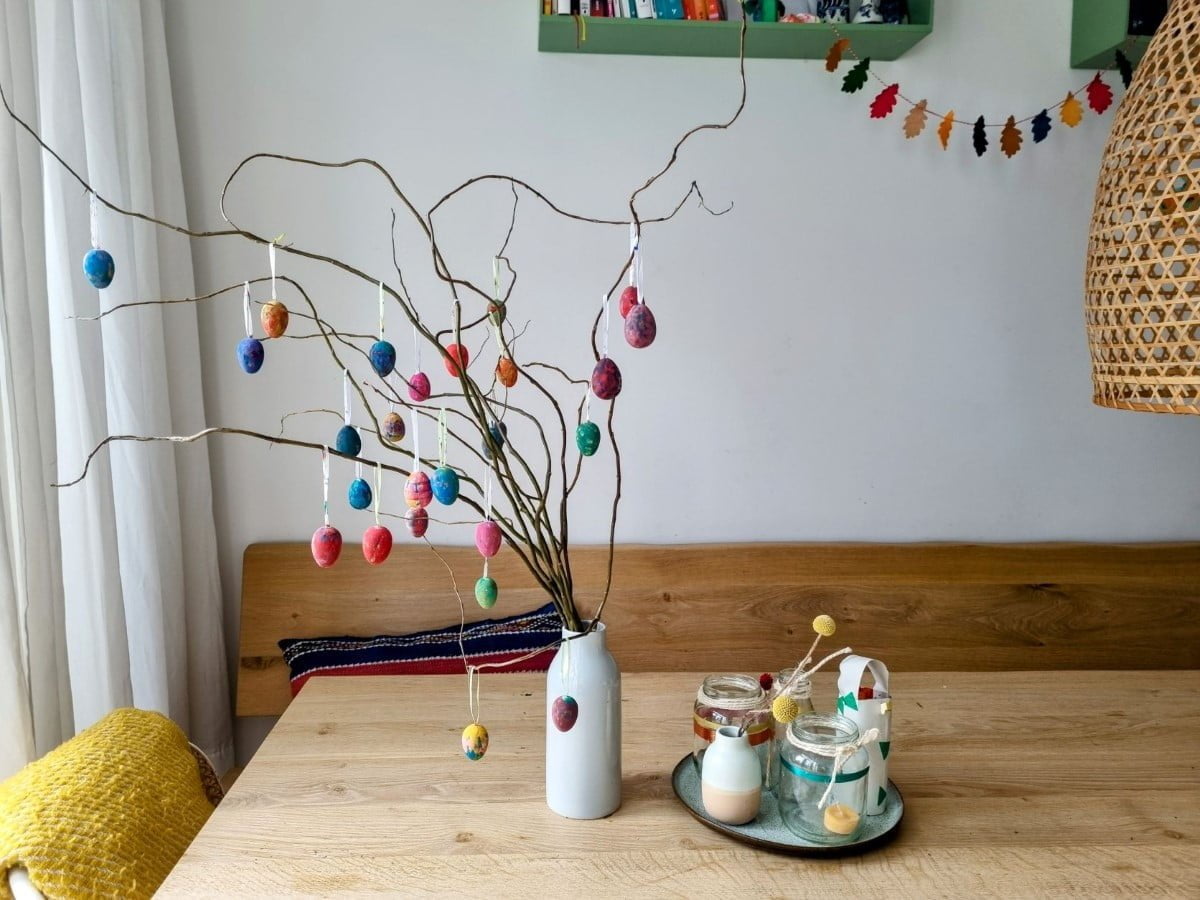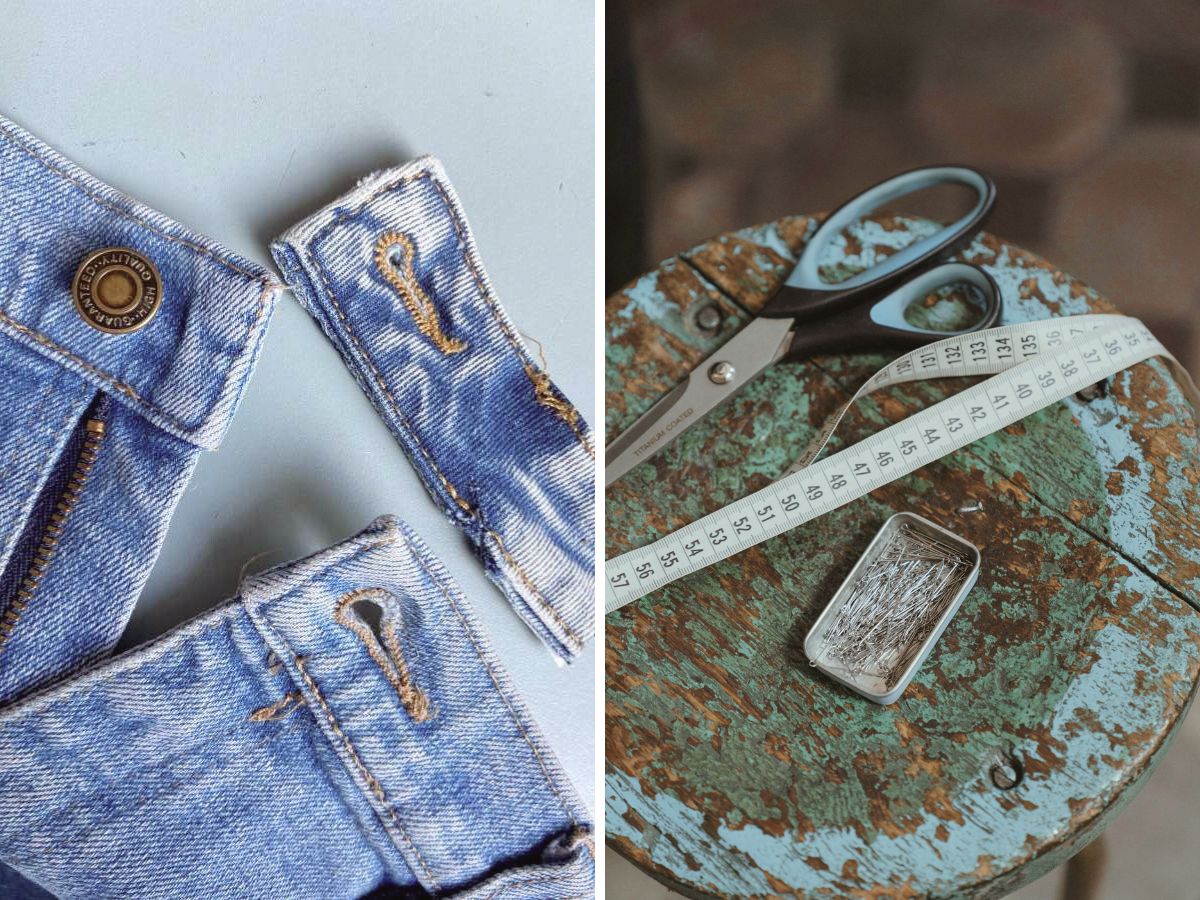Spring fever! Are you feeling them yet? Around Easter, we all feel like freshening up our homes, bringing some colour inside and sometimes even a big clean. Putting up an Easter branch is an old tradition that is somewhat of an extension of this: it is a relic of the worship of the maypole, which celebrated the beginning of spring and with it a new beginning. Many people buy the Easter branch in the supermarket. Hup, plastic off and into a vase. Still a bit of a waste when you think about the pesticides, transport and packaging. So how do you get a nice sustainable Easter branch? You cut a branch from a willow tree (with a neighbour's permission). And before you know it, your Easter branch will have roots and grow into a beautiful tree.
The origins of the Easter branch
At Easter, it is traditional to put a few Easter branches in a vase and decorate them with all kinds of cheerful ornaments. In some parts of the Netherlands, an Easter branch is also called an Easter tree. Very long ago, certain trees were considered sacred and people gathered at the tree to sacrifice and pray. From a practical point of view, people now choose a few branches in a vase instead of a tree.
Which branches make up the ultimate Easter branch?
The ultimate Easter branch has curly branches with green buds that later become fresh leaves. Easter branches usually come from the curly willow. When I didn't know any better, I bought them ready-made in the supermarket. Nice and easy, take off the plastic and pop them straight into the vase. Fun decorating together with the children. Later I learned that it's better not to buy plants in the supermarket. The ornamental plants sold by garden centres, DIY shops and supermarkets are often full of pesticides that are (very) harmful to bees. About poison in plants, we previously screened this article. Add to that the transport of the branches to the supermarket and packaging... So it's not really a green choice to buy Easter branches from the supermarket so.
Grow your own sustainable Easter branch
OK, but how do you get those beautiful Easter branches? When you leave branches of curly willow or curly hazel in a vase, these branches start to make roots. You may have noticed this with the Easter branches in your vase. One such branch can grow into a new tree. I have done this myself and the result is amazing. The tree is now about four metres tall and I can cut my own Easter branches from the tree every year. Now that's what I call a fun tradition! So take a look on Marktplaats or ask in your neighbourhood if someone has a curly willow and you can cut a few branches from it. Put them in a vase with water, wait until they have grown quite a few roots and voilà, your very own tree is born. Just wait until mid-May before you actually put your mini tree in the open ground.



Learn more about the writhing willow.
The curly willow (Salix babilonica ‘Tortuosa’)
The curly willow, also known as winding willow, flowers with yellow catkins from March to April. It is a carrier tree, which means it produces nectar and pollen for bees and other insects. After a long, hard winter, it is very important for these early flyers to be able to refuel. With this, the yellow catkins are the richly laid table for insects.
It likes to stand in full sun or half sun. The curly willow can grow eight to 12 metres tall, but can be kept in check with regular pruning. It likes to grow in moist soil, but will do fine anywhere. At mine, it grows in the chicken run. It loses its leaves in winter, the twisting branches give a nice decorative silhouette.
Native plants and trees
Curly willow is native to East Asia. It is preferable to put as many native trees, shrubs and plants in your garden as possible. You can read why native plants are important here. I do not have exclusively native plants in my garden, but I do try my best to use mostly native plants. If plants do not come from here, they must always add value for the animals, such as pollen or food in the form of berries. I also use non-native plants to make the flowering arc as long as possible. I strive to always have something in bloom year-round so that insects are provided with pollen and nectar. And that does not always succeed with only native plants.


You don't buy a sustainable Easter branch in a plastic wrapper in the supermarket, but cut it from your own garden (or with permission from neighbours). Willow branches abound in Dutch gardens!
What else can you do with willow branches?
Many animals love the branches of willows. Rabbits, goats and horses love to eat them. The willow is a very strong plant, so it is fine to cut a few branches every week. The branches also work well in flower arrangements or in a vase of flowers from your own garden. But there is more you can do with this plant!
Willow water from your sustainable Easter branch
You can also use willow water (a decoction of the twigs) as an alternative to cutting powder. Cuttings powder is used to make cuttings grow better, but with a willow you can make your own and you don't need to buy a jar of cutting powder. Willows root very well because they contain a certain plant hormone, which is also one of the constituents of commercial cutting powder. In addition, willow also contains salicin. This is the raw material for acetylsalicylic acid, better known as aspirin. For willow, it is part of its immune system, making the whole plant react to a local infection with pathogens. And with increased defences, you obviously increase the chances of a cutting succeeding. Willow water is made by cutting young branches (twigs) into small pieces of 2.5 centimetres, removing the leaves and then putting the twigs in a glass jar. Pour boiling water over them and let it cool. Another way is to pour cold rainwater into the pot and soak for 24-48 hours. So this takes a little longer, but is more sustainable. Strain the water and you can use it immediately, by putting your cuttings in the willow water for a few days.
The symbolism of the sustainable Easter branch
Besides the fact that, for many people, an Easter branch simply belongs there at Easter to enhance the Easter feeling, they also mark spring. A fine, fresh, new beginning. A new season: the return of the sun and fertility. A self-growing Easter branch fits that symbolism perfectly in that respect! Have you grown your own Easter branch into a beautiful willow? We are curious to see how it stands shine, so be sure to send us a picture of your sustainable Easter tree!
More green tips from thegreenlist.nl
- Such a sustainable Easter branch naturally includes sustainable Easter decorations. See how to make DIY Easter decorations from leftover materials here.
- Dyeing eggs? Then quickly check out our DIY: natural paint for Easter eggs.
- Looking for vegan substitutes for egg? Read all about it in this article.
- More of a sweet tooth? Then try these surprise vegan Easter eggs.
Photo credits: main image: Hudsoncrafted (Pixabay), decorated Easter branch with eggs: Mariya M (Pixabay), other photos: Amanda Sniekers.












